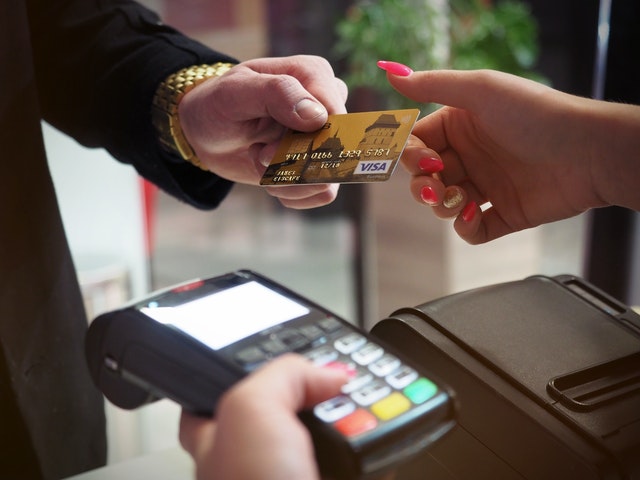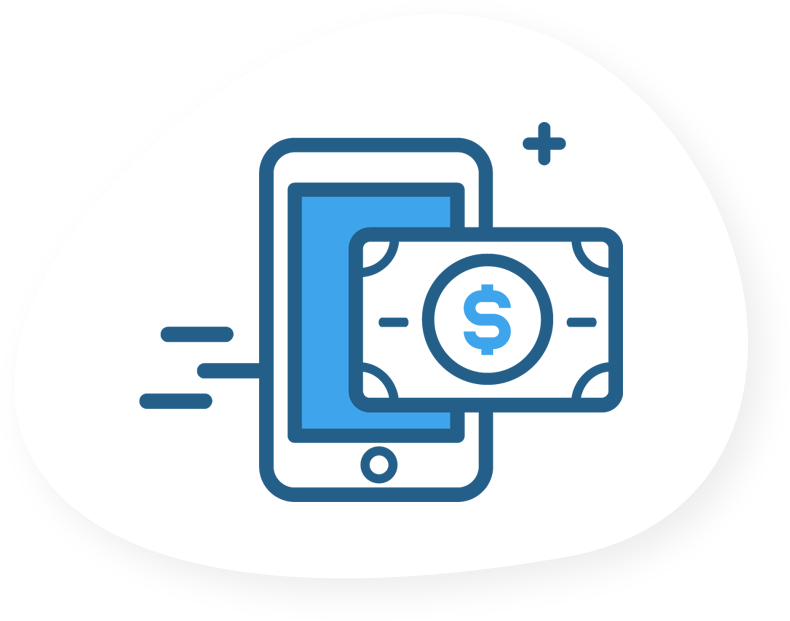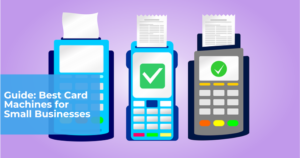If you’re running a small business, then you’ll be walking on eggshells most of the time, trying to manage everything perfectly. Therefore, it can be quite disheartening when you find out that a few of your customers have raised credit or debit card dispute and it results in a chargeback.
This isn’t something you’d want to see as a business owner, which is why you’d do anything to make sure that this doesn’t happen to you, and this article covers the major tips you can apply to prevent chargebacks from happening as a small business.
Index:
What Is a Chargeback?
First off, let’s see wat a chargeback actually is. As the name clearly implies, it’s money that gets ‘charged back’ to the customer – money that they actually paid for your products or services. Typically, chargebacks occur when customers have paid using credit cards, debit cards over £100 (as per Section 75 of the Consumer Credit Act in the UK, Section 170 of the Fair Credit Billing Act in the US) and some alternate payment methods (e.g., Pay by Bank App, PayPal have their own dispute resolution process, and request to have their money refunded to them. Some of the reasons include:
- The consumer having “buyers’ remorse” about their purchase
- The buyer wasn’t patient enough to wait for refund
- A consumer having fraud committed using their card and wanting their money back
- Vendors returns, refund or delivery policy being too confusing
- Consumer using it to try to get something for free
- Consumer forgot or didn’t recognize the transaction – this is quite common if a business trading name is different to the one which appears on a statement
It essentially comes down to two main reasons – an unauthorised charge or lack of time to go through a regular returns/ refund process.
Usually, the card issuer which is involved in the chargeback gives your payment processor the reason for the customer’s request. It can be anything, from their dissatisfaction in your product to late deliveries, or even poor customer service. Most of the time, customers are going through their credit card statements and when they see a charge they can’t place or a merchant name they don’t recognise, they dispute it.
Hence, unless a chargeback is actioned within the allotted time period, the payment processor often sides with the customer and processes the chargeback transaction, which causes the business to suffer a loss. However, these aren’t the only reasons. Some people may also do it for fraudulent reasons, to see whether they can get their money returned when there was nothing wrong with the product or service.

Importance Of A Refund Policy & How They Can Help:
A return and refund policy is a document that contains terms, which dictate how, when, and why a customer can return a product or opt out of a service. This policy also dictates whether they’re eligible for a refund, by factoring in various scenarios.
A strong and well-written refund policy is one of the best ways to combat chargebacks. The main reason for this is because banks and card issuers advise customers to try to settle their disputes directly with the merchants before initiating a chargeback request or dispute. However, in the UK, PSD2 regulation (which became law on 13th January 2018) stipulates that a customer can now go directly to their bank/card issuer, raise the problem with them and the onus is now upon the bank/card issuer to seek redress on behalf of their customer.
If customers find that you have a reasonable refund policy in place, then they are less likely to go to their card issuer.
The best way to go about this is to write a simple and easy-to-understand policy that doesn’t involve any language that would go over the customers’ heads. Moreover, you can easily win over your customers by being a little lenient and flexible. For instance, if you give them a 30-day return window instead of 14 days, you’ll experience a sharp decrease in chargebacks.
Another thing that irks customers is when they have to return a certain product and they’re also expected to pay the shipping fees for it. This is a big no-no, and it drives customers away. Therefore, you can add free shipping to your policy, so that customers would rather deal with you than go over your head to their card issuer.
Last but not least, if you really want your customers to engage with your brand and not request any chargebacks, you have to be very polite and courteous. After all, they’re paying for your products, so you have to be as kind as you can. Make sure this tone also reflects in your refund policy.

How Can Chargebacks Affect My Business?
Chargebacks are never good for any business, and they end up doing more harm than good. Here are some ways in which chargebacks affect your business:
- Chargeback fees: This fee is imposed by the payment processor on you, and it can be anywhere between £/$10 and £/$100, meaning that not only will the customer get their money back, but the payment process or will also deduct a hefty sum of money from your account, even though none of this may be your fault.
- Weak financial health: Chargeback fees have a huge impact on business, and they can also hurt your finances. Imagine if a dozen customers put in a dispute with their card issuer at the same time and the payment processor charges you £50 for each dispute? It’d cost you £600, and you won’t even get anything in return.
- Lower credibility: Chargebacks also hurt your business’ credibility, and if you start getting too many of them, the payment processor may deem your business to be of a higher risk, which might result in your account being frozen, transactions blocked, higher transaction and chargeback fees, or your account being suspended for good.
Therefore, it’s highly important for your business’ health that you do all that is possible to prevent chargebacks at all costs.

Ways to Combat Fraud & Methods Of Protection
Fraud is one of the major reasons why cardholders need to process chargebacks and most of the time, this happens due to unauthorised transactions. Online payment is certainly a beneficial thing, but it also allows for cardless transactions, where you just must know a person’s card number, expiry date and the security code at the back of the card to finalize the order. These are also known as ‘card not present’ (CNP) transactions.
As a merchant, you can help prevent these unauthorised transactions by keeping an eye for certain inconsistencies or ‘issues’ in an order or transaction. Not only will your customers thank you for it, but it’d also save you from hundreds of pounds/dollars in chargeback fees.
Some of the things you need to monitor include:
- A difference in the billing and shipping address
- Shipping address is of an empty property or P.O. box
- The same shipping address is used for different customer orders
- Orders that don’t make sense at all
- Trust your instinct, if something doesn’t seem right, then usually it isn’t.
- Fake or bogus email addresses
- Incorrect security code
- Demanding next-day delivery on huge orders
Requesting a refund to a payment card/method e.g. A card payment returned as a bank transfer Payment scheme rules stipulate that any refund/chargeback is returned to the same payment instrument from which the transaction was made. If a customer requests using an alternative method, this should always be queried, as it is a common trick fraudsters utilise when making purchases with stolen payment cards.
The first thing to do in such a scenario is to call up the customer on their given number. It’s highly likely that the call won’t go through or if you send an email, it’ll fail to send. Another way is to delay sending the order, especially when the ‘customers’ insist on overnight shipping.

Customer Focus & Remaining Clear On Shipping & Service
Although fraudulent transactions are one of the major reasons for chargebacks, there are also other reasons for this, such as poor customer service. According to chargeback statistics, 81% of customers process a chargeback request just because it’s highly convenient, and customer service has a major role to play in this regard.
If you are able to quickly address customer complaints and fix them in a prompt and proactive manner, then there is likely to be a significantly smaller chance in the occurrence of any chargebacks. The key to this is to set clear definitions and expectations, especially regarding shipping. Due to COVID-19, the ecommerce industry is still experiencing difficulties in delivering many orders on time.
Therefore, you need to express to your customer what they are due to receive, and how much time it may take. Not only would it put their mind at ease, but it’ll also stop them from posting a dispute just because it’s more convenient than filing a return request.

Analysing Data & Keeping Records
Another way to prevent chargebacks is to keep an organised and structured database where you maintain accurate information regarding every customer, as well as every product sold, service delivered, order or shipment that you have processed. Make sure to have every receipt with you as well.
Every time a payment processor receives a chargeback request, it sends a code to the merchant, along with the reason for which the chargeback is requested and a deadline by which they get a chance to explain themselves. If you have everything in place, you’ll be able to convince them that everything is in order at your end, and so there is no basis for the chargeback.

Company Contact Information: Why It’s Crucial
Another method you can apply to reduce the likelihood of chargebacks being posted is to provide your accurate contact information everywhere, including the website, order page, receipt, shipping document, invoice, etc. Basically, it should be readily available, so that the customer can call and easily get in touch.
If you clearly mention your contact numbers and email addresses everywhere, your customers will find it easier to communicate with you, enabling any issues to be dealt with efficiently, so that things never escalate to result in a chargeback being raised.

Being Proactive & Acting Fast
Finally, the key to prevent chargebacks for small businesses is to be proactive and take instant decisions, rather than sitting on your hands and letting fraudsters get the better of you and your customers.
If you feel that you are frequently receiving chargebacks, then it’s time that you quickly look to understand the causes, to address the root cause of the problem and work towards mitigating it. Your payment processor can help in addressing these concerns.













